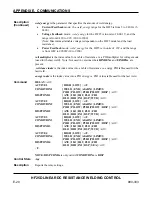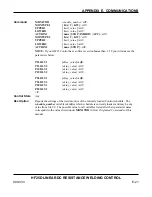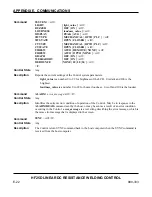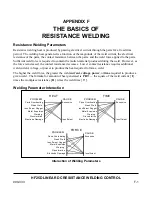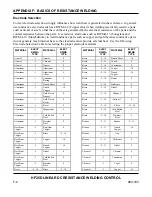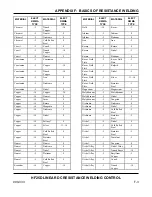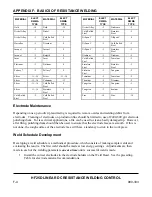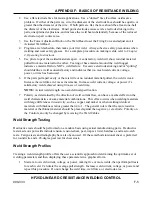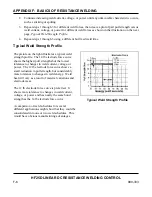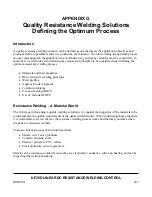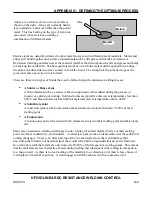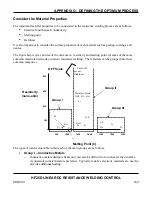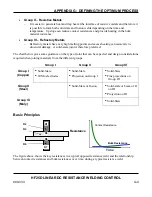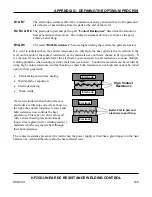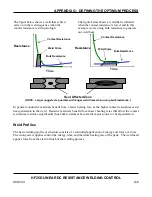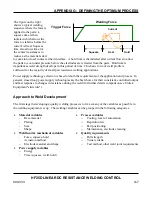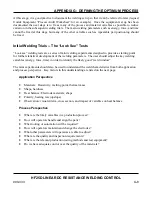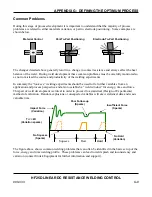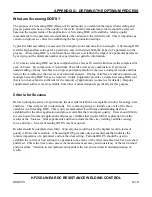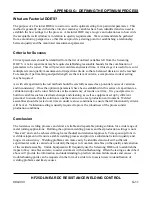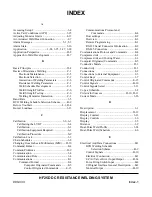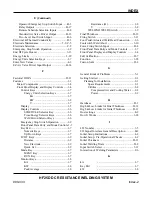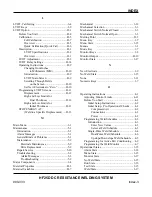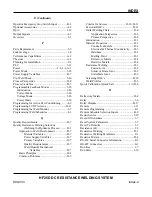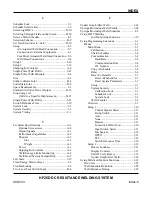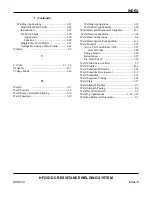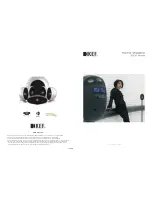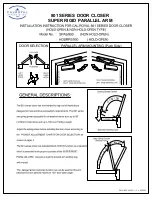
APPENDIX G: DEFINING THE OPTIMUM PROCESS
HF25D LINEAR DC RESISTANCE WELDING CONTROL
990-333
G-4
•
Group II – Resistive Metals
−
It is easier to generate heat and trap heat at the interface of resistive metals and therefore it
is possible to form both solid state and fusion welds depending on the time and
temperature. Upslope can reduce contact resistances and provide heating in the bulk
material resistance.
•
Group III – Refractory Metals
−
Refractory metals have very high melting points and excess heating can cause micro-
structural damage. A solid-state joint is therefore preferred.
The chart below gives some guidance on the type of joint that can be expected and design considerations
required when joining materials from the different groups.
Group I
Group II
Group III
Group I
(Copper)
•
Solid-State
•
W/Mo electrodes
•
Solid-State
•
Projection on Group I
•
Solid-State
•
Fine projections on
Group III
Group II
(Steel)
•
Solid-State or Fusion
•
Solid-state or braze of II
on III
•
Projection on III
Group III
(Moly)
•
Solid-State
Basic Principles
The figure above shows the key resistances in a typical opposed resistance weld and the relationship
between contact resistances and bulk resistances over time, during a typical resistance weld.
R1
R7
R3
R5
R2
R4
R6
Time
Contact Resistance
Bulk Resistance
Resistance
Summary of Contents for HF25A
Page 9: ...HF25D DC RESISTANCE WELDING SYSTEM 990 333 ix ...
Page 10: ......
Page 20: ......
Page 84: ...CHAPTER 6 CALIBRATION HF25D DC RESISTANCE WELDING SYSTEM 990 333 6 4 Final Calibration Setup ...
Page 113: ......
Page 129: ......
Page 153: ......
Page 171: ......

